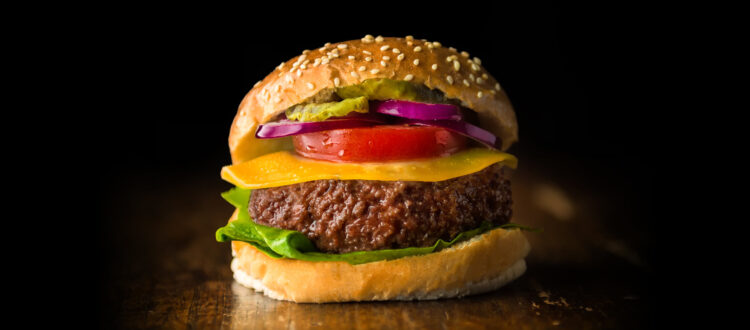CULTIVATED MEAT: A Possible Measure for Climate Change Adaptation and Mitigation
Cultivated meat (or “cultured meat”) is a type of meat produced through a methodology known as “cellular agriculture.” Cellular agriculture aims to produce foods, including meat, fish, and dairy products, by cultivating stem cells. The primary fundamental difference from conventional meat production is that cultivated meat does not require animal farming. In fact, the key innovation of cultivated meat is that it is not strictly necessary to raise one or more animals to obtain meat; instead, cells can be grown to obtain only the tissues needed for consumption.
Cultivated meat is produced through the following steps:
- Harvesting: Stem cells are collected from an animal. The process is known as a “biopsy,” and it is non-invasive.
- Proliferation: Stem cells are placed in a culture medium to increase their numbers, i.e., to proliferate.
- Differentiation: Stem cells, influenced by external inputs, are guided to differentiate into specific tissue types. In this phase, “scaffolds” are often used, which are containers that help shape the final product.
- Collection: After differentiation, the cells are collected and subsequently packaged.
The production aspect is of fundamental importance when placed in the context of climate change and resource supply in the coming 30 years. It should be noted that the global population is projected to surpass 8.5 billion by 2030, and there is a need to ensure food supply for all human beings on the planet. Considering that the current food system already lacks food security, it becomes imperative to contemplate the strategies that need to be implemented in the future to achieve this goal, while applying principles of ecology and environmental protection.
The Intergovernmental Panel on Climate Change (IPCC) in its 2023 report emphasizes that reducing the demand for animal-based food products and increasing the proportion of plant-based foods in diets are fundamental demand-side adaptation measures. The primary reason for reducing meat consumption as an adaptation measure is that it alleviates pressure on land and water resources, thereby reducing vulnerability to climate change and resource limitations. Additionally, intensive livestock farming is responsible for 14.5% of total global anthropogenic greenhouse gas emissions, as assessed by the Food and Agriculture Organization (FAO), making it the largest contributor to greenhouse gas production within food systems.
The question, then, that cellular agriculture addresses is: Is there a way to produce animal proteins that reduces the pressure on natural resources and, more broadly, environmental impact? Scientists, non-governmental organizations (NGOs), and institutions worldwide are sharing their knowledge and resources to answer this question and tackle the most challenging aspects of the production process and research.
In 2021, the independent research organization DE Delft gathered data from 15 industrial partners, including 5 producers in Singapore, to assess the life cycle and techno-economic aspects of cultivated meat. The results of this study show that cultivated meat has a smaller ecological footprint, uses less land and water compared to calculations for dairy cattle, and achieves higher efficiency in protein production (i.e., kilograms of feed needed to produce 1 kilogram of protein). Furthermore, the production of cultured meat occurs within highly controlled bioreactors, preventing the presence of potential infections and species jumps (“spillover”) of bacteria/viruses, phenomena common in traditional farming.
However, some production-related challenges still need to be addressed, including energy supply, production cost reduction, and optimization of large-scale production processes. To address these challenges, some countries, including the Netherlands, have decided to fund small and medium-sized enterprises involved in cellular agriculture. Other nations, such as Singapore, have already introduced cultivated meat products to the market, becoming the first in the world to do so.
In the context of the global climate crisis, cultivated meat represents a food biotechnology that, along with other factors, can significantly reduce humanity’s environmental impact. Finally, some projections indicate that the cultivated meat market could reach 25 billion by 2030, as estimated by McKinsey, thereby becoming an opportunity to add economic value to environmental protection.
Article by Bruna Anzà, Italian Climate Network Volunteer
Cover photo: credits by Mosa Meat
Bibliography:
[1] Chen L, Guttieres D, Koenigsberg A, Barone PW, Sinskey AJ, Springs SL. (2022) Large-scale cultured meat production: Trends, challenges and promising biomanufacturing technologies. Biomaterials. Jan;280:121274. doi: 10.1016/j.biomaterials.2021.121274. Epub 2021 Nov 25. PMID: 34871881.
[2] Sadigov R. Rapid Growth of the World Population and Its Socioeconomic Results. ScientificWorldJournal. (2022) Mar 23;2022:8110229. doi: 10.1155/2022/8110229. PMID: 35370481; PMCID: PMC8967589.
[3] Machovina, B., K.J. Feeley, and W.J. Ripple, (2015): Biodiversity conservation: The key is reducing meat consumption. Sci. Total Environ., 536, 419–431, doi:10.1016/j.scitotenv.2015.07.022.
[4] Vanham, D., A.Y. Hoekstra, and G. Bidoglio, (2013): Potential water saving through changes in European diets. Environ. Int., 61, 45–56, doi:10.1016/J.ENVINT.2013.09.011.
[5] Crippa M, Solazzo E, Guizzardi D et al (2021) Food systems are responsible for a third of global anthropogenic GHG emissions. Nat Food 2:198–209
[6] Sinke, P., Swartz, E., Sanctorum, H. et al. (2021) Ex-ante life cycle assessment of commercial-scale cultivated meat production in 2030. Int J Life Cycle Assess https://doi.org/10.1007/s11367-023-02183-9[7] Post, M.J., Levenberg, S., Kaplan, D.L. et al. (2020) Scientific, sustainability and regulatory challenges of cultured meat. Nat Food 1, 403–415. https://doi.org/10.1038/s43016-020-0112-z

